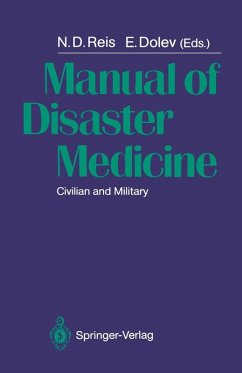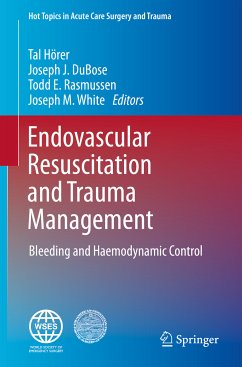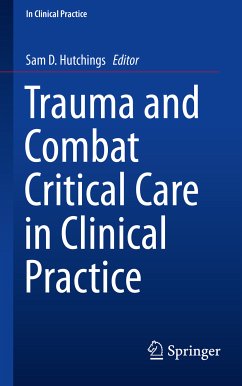
Creating a Modern Trauma Center (eBook, PDF)
Versandkostenfrei!
Sofort per Download lieferbar
112,95 €
inkl. MwSt.
Weitere Ausgaben:

PAYBACK Punkte
56 °P sammeln!
Violence and trauma are growing global problems. From the impacts of geopolitical forces to structural violence to the local effects of interpersonal violence, trauma is ubiquitous in our society. Existing trauma systems everywhere are expanding to meet the needs of injured patients. Unfortunately, in some places, adequate resources are not in place to provide modern trauma care. Until very recently, this absence of resources existed on the South Side of Chicago. For three decades, the South Side of Chicago was a relative trauma "desert". In 2018, the University of Chicago Medicine opened a mo...
Violence and trauma are growing global problems. From the impacts of geopolitical forces to structural violence to the local effects of interpersonal violence, trauma is ubiquitous in our society. Existing trauma systems everywhere are expanding to meet the needs of injured patients. Unfortunately, in some places, adequate resources are not in place to provide modern trauma care. Until very recently, this absence of resources existed on the South Side of Chicago. For three decades, the South Side of Chicago was a relative trauma "desert". In 2018, the University of Chicago Medicine opened a modern adult trauma center in an area that previously suffered from a relative lack of access to adult trauma care.
This book will provide the reader with an understanding of the journey the University of Chicago went through to develop a modern trauma center where there previously was nothing. It will chart a journey through the history on the South Side of Chicago and will provide an understanding of the proper needs assessment that goes into planning a new trauma center. It will describe the implementation of the multi-disciplinary teams needed to provide modern trauma care. It will then describe the effects of this trauma center and its future directions. As many places are struggling with caring for increasing levels of violence, there likely will be a need for others to go through a similar developmental process. Sharing the experience of the University of Chicago Medicine going from a non-trauma hospital to the busiest trauma center in Chicago, we hope that this book will provide some guidance to others and accompany you on one's journey.
This book will provide the reader with an understanding of the journey the University of Chicago went through to develop a modern trauma center where there previously was nothing. It will chart a journey through the history on the South Side of Chicago and will provide an understanding of the proper needs assessment that goes into planning a new trauma center. It will describe the implementation of the multi-disciplinary teams needed to provide modern trauma care. It will then describe the effects of this trauma center and its future directions. As many places are struggling with caring for increasing levels of violence, there likely will be a need for others to go through a similar developmental process. Sharing the experience of the University of Chicago Medicine going from a non-trauma hospital to the busiest trauma center in Chicago, we hope that this book will provide some guidance to others and accompany you on one's journey.
Dieser Download kann aus rechtlichen Gründen nur mit Rechnungsadresse in A, B, BG, CY, CZ, D, DK, EW, E, FIN, F, GR, HR, H, IRL, I, LT, L, LR, M, NL, PL, P, R, S, SLO, SK ausgeliefert werden.












